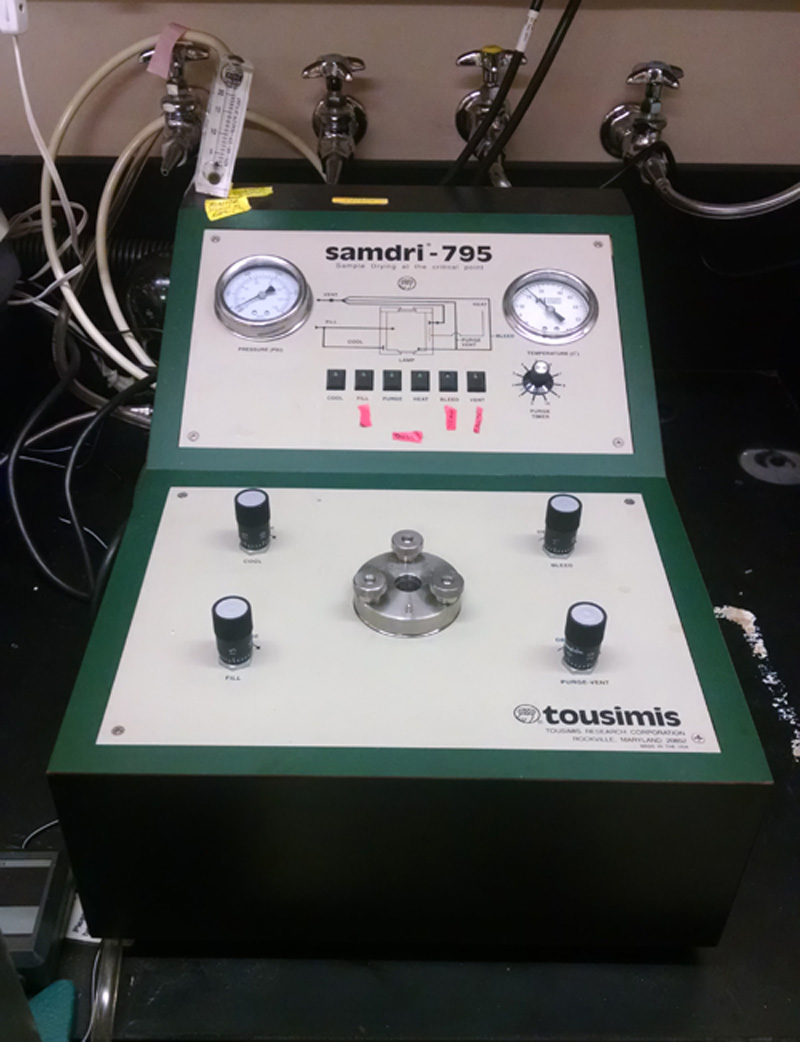Critical Point Dryer
Tousimis Samdri®-795

Critical point drying is a sample preparation technique used for viewing soft tissue samples under vacuum. When a sample is dried under atmospheric conditions, any liquid in the sample evaporates. During evaporation, the liquid in the sample crosses a phase boundary which can lead to imaging artifacts, such as burst or collapsed cells. By increasing both the temperature and pressure inside the chamber, the critical point of the drying liquid can be reached. After the critical point is passed, the pressure can be lowered resulting in a dry sample. In ICAL, the liquid CO2 is used and the critical point is reached at 1072 psi and 31°C.
Before a sample can undergo critical point drying, it must be specially prepared. This usually involves fixation of the cells with formaldehyde or glutaraldehyde, staining of the cells with osmium tetroxide, and complete dehydration of the sample with ethanol. The last step is extremely important as any water left behind will not pass through the critical point with the CO2 and will evaporate separately causing damage.
The advantages of critical point drying are:
- Sample drying with fewer induced artifacts
- The ability to fix/stain the cells

